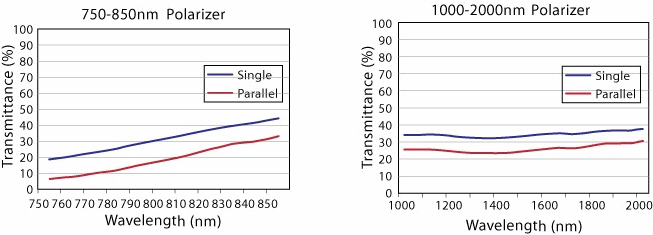무엇을 도와드릴까요?

이 고대비 NIR Glass Linear Polarizers는 광학 등급 글래스의 두 플랫 사이에 폴리머 편광 필름이 층을 이룬 구조를 이룹니다. 이 폴라라이저는 저출력 근적외선(NIR) 레이저, LED, 기타 근적외선 광원 등 다양한 어플리케이션에 이상적으로 사용할 수 있습니다. 또한 광대역 범위로의 확장으로 fiber optics isolator 및 coupler를 포함한 각종 통신 장치에도 안성맞춤입니다.

에드몬드옵틱스는 특정 어플리케이션 요건을 충족할 수 있는 광학 및 이미징 부품에 대한 포괄적인 맞춤형 제조 서비스를 제공합니다. 에드몬드옵틱스는 프로토타입 개발, 본격적인 생산 준비 단계 등 단계와 관계없이 고객의 니즈를 충족하는 유연한 솔루션을 제공합니다. 에드몬드옵틱스의 엔지니어는 전 개발 과정을 지원합니다.
에드몬드옵틱스의 제조 역량:
자세한 내용은 에드몬드옵틱스의 맞춤형 제조 역량 페이지를 확인하거나 여기로 문의 바랍니다.
본사 및 지사별 연락처 확인하기
견적 요청 도구
재고 번호 입력 필요
Copyright 2023, 에드몬드옵틱스코리아 사업자 등록번호: 110-81-74657 | 대표이사: 앙텍하우 | 통신판매업 신고번호: 제 2022-서울마포-0965호, 서울특별시 마포구 월드컵북로 21, 7층 (서교동, 풍성빌딩)
The FUTURE Depends On Optics®